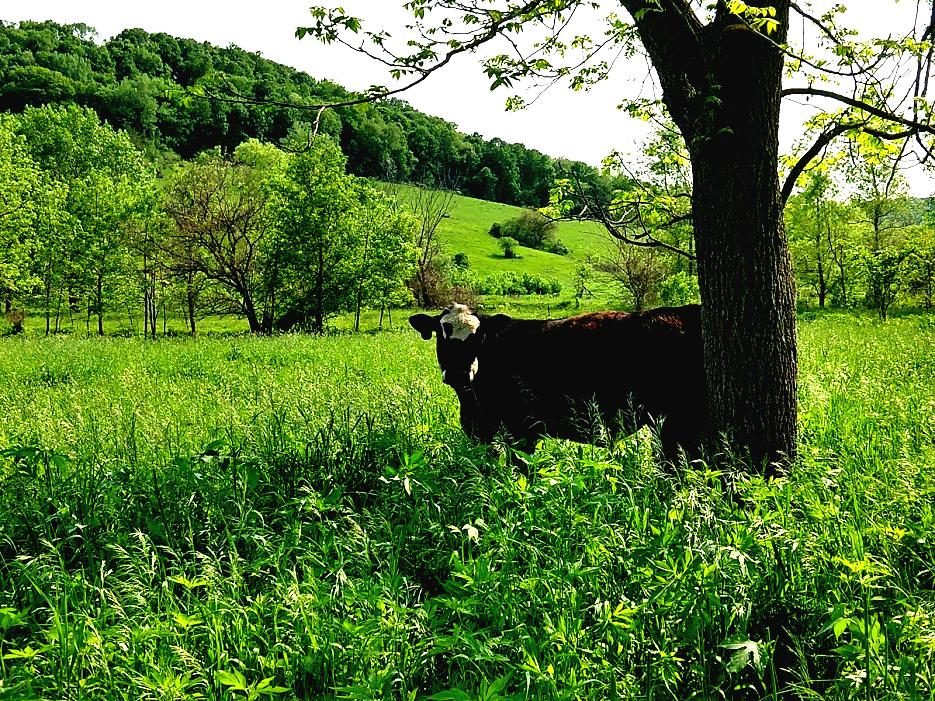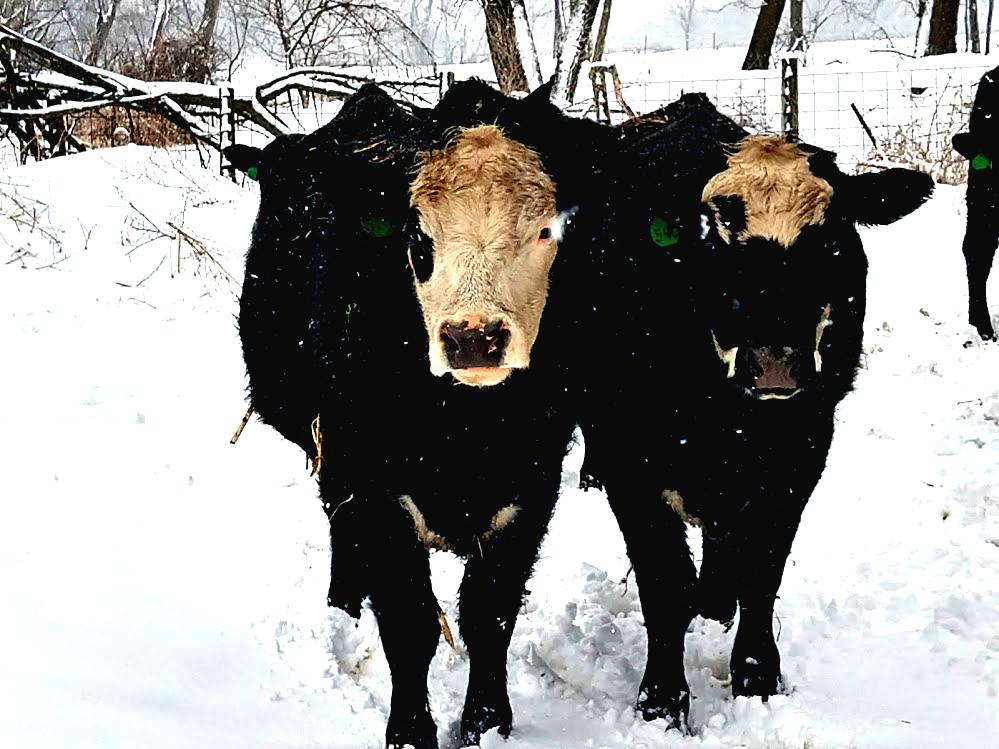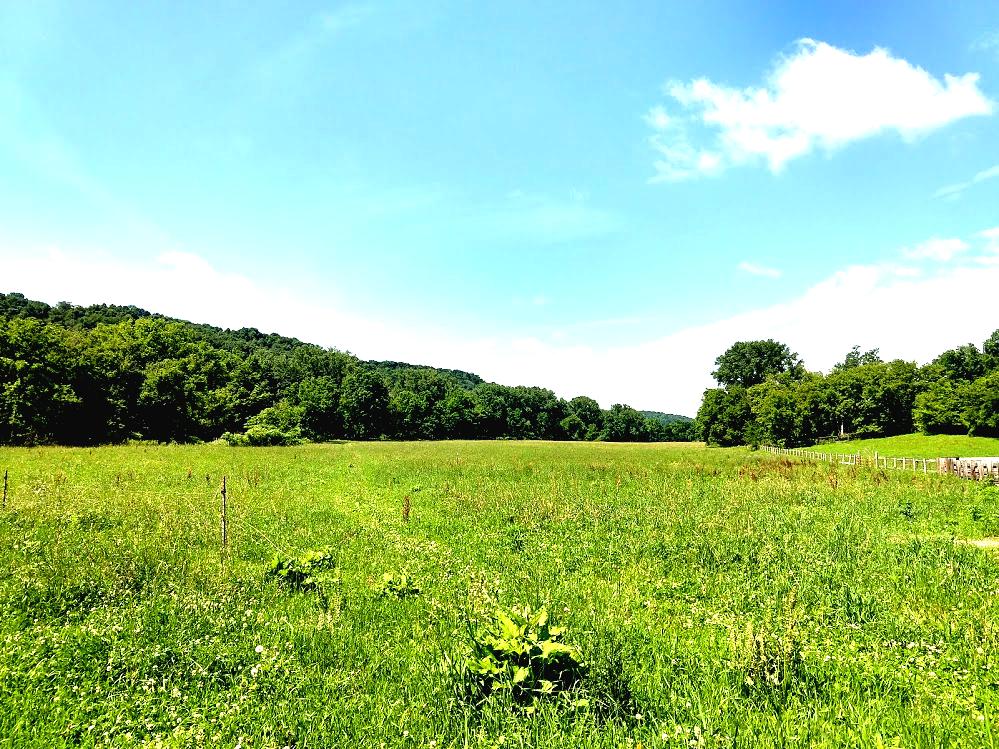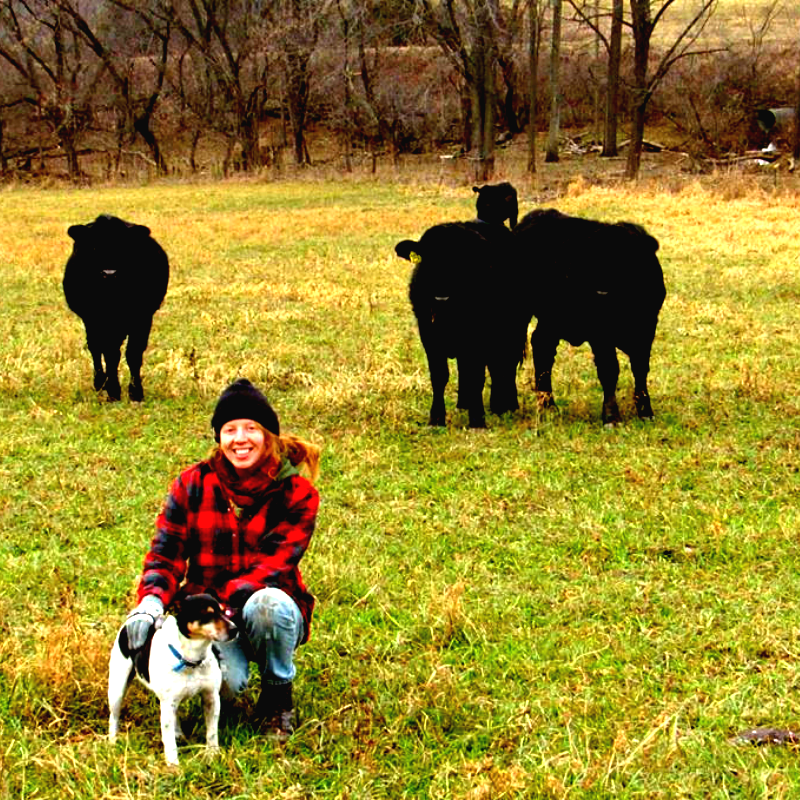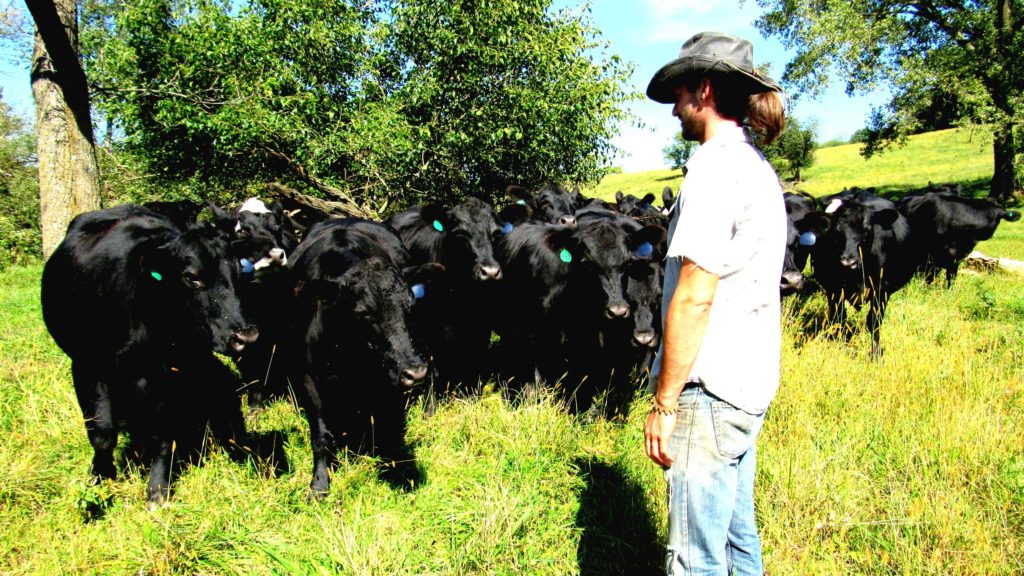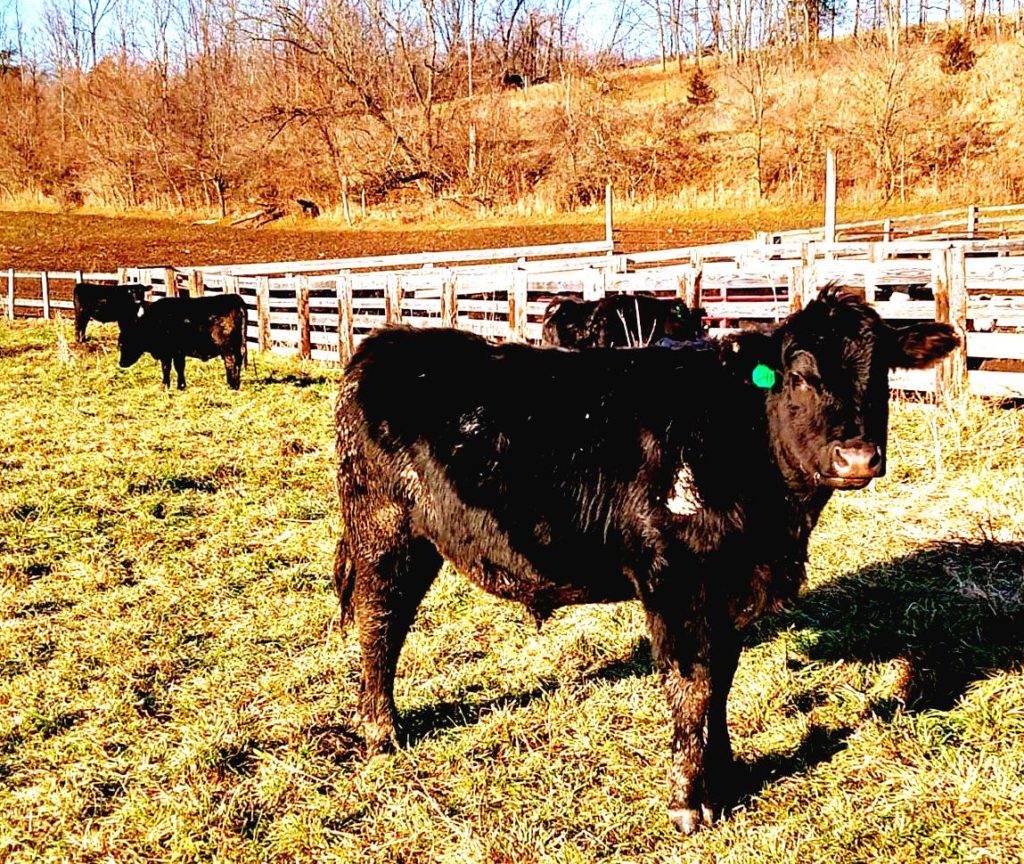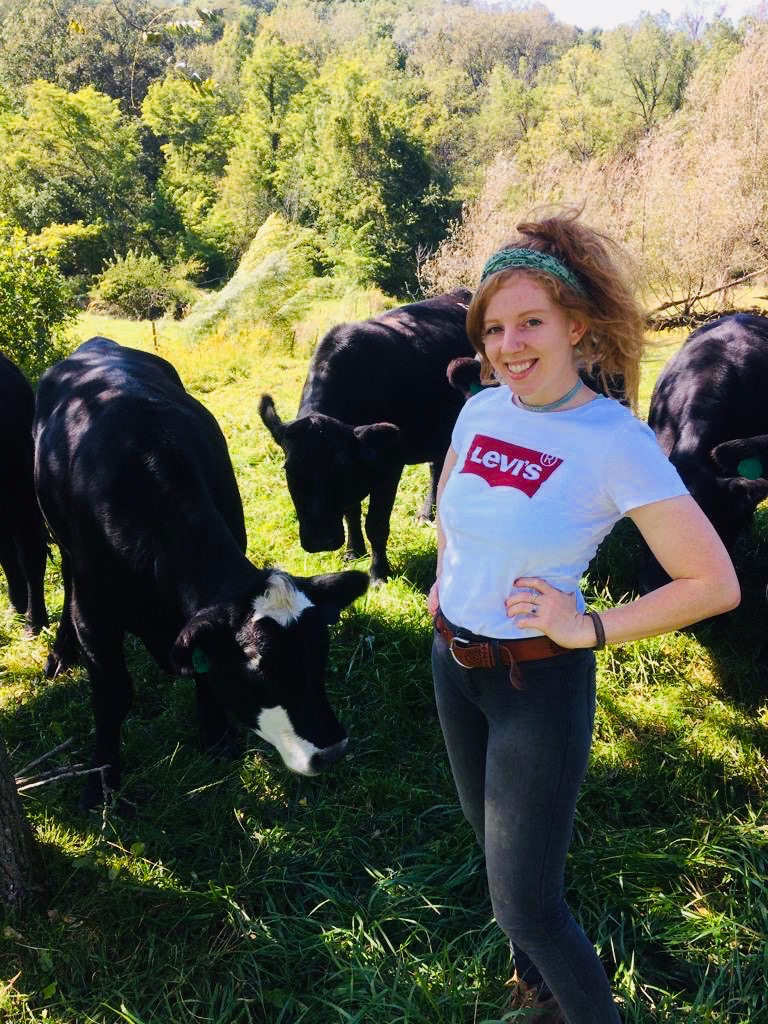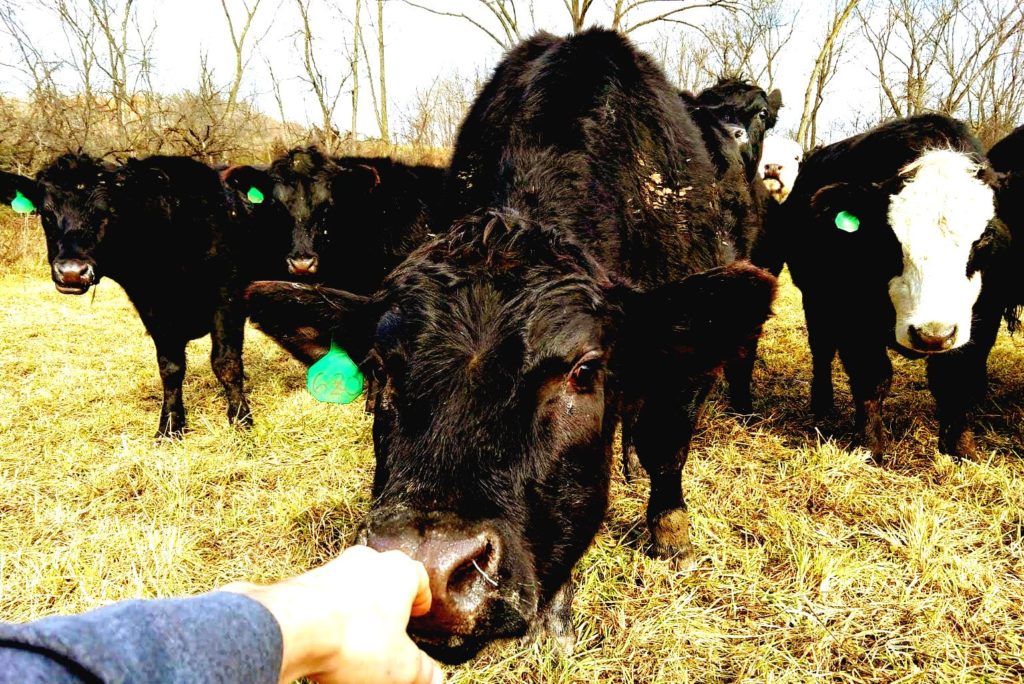Our Philosophy
Here at McGreal Family Farm, our cows are 100% grass-fed, spend the entirety of their lives on pasture, and meet USDA organic certification standards without the official label.
Hi everyone, Jake here, this page is intended to assist in the understanding of the crazy world of beef. We didn’t all grow up around farming and even if we did it’s not always easy to get all the information. I admit, I have eaten cheap meat from the grocery store, the cheapest, when you don’t know what’s going on behind the scenes you don’t have much to judge on. In more recent years, I have learned a thing or two about the meat we eat and where it comes from. At this stage in my life, I rarely buy meat that is not locally sourced. I try to avoid eating meat from CAFOs, or “Concentrated Animal Feeding Operations.” My vision and experience of animal husbandry, combined with my desire to eat healthy, has taught me a lot about the origins of the foods I consume. For this reason, I have put together this guide with my ever-growing knowledge of the importance of making healthy choices when it comes to purchasing meat, beef specifically.
Definitions: Grass-fed? Pasture-raised? All natural? Organic? I don’t know about you, but I think it can be incredibly confusing. It seemed to me like there were a lot of “buzz words” out there pushing higher prices for different beef products. Before I returned to farming, as I started to aspire to a more conscious lifestyle, I started looking for healthier options in the grocery store and at the farmers’ market but especially with beef I was often disappointed. I had the very fortunate privilege to grow up eating plenty of grass-fed beef and I knew how good it could be. Even at some “natural” food stores, I often felt unsure when trying to purchase a decent steak or a pound of ground beef. My hope is to give some basic definitions of words that get thrown around in this industry so that you, too, can make informed decisions about your food.
- Grass-fed: Animals that are grass-fed eat grass. Sounds simple, right? Well, this is where things get tricky. Some animals are fed just grass, others grains (usually corn), and most a combination of both throughout their lives. Animals that are labeled as “100% grass-fed” have only been fed grass. Other animals simply labeled “grass-fed” may have been fed a combination of grass and corn throughout their lives, although this is typically 95% grass. These exact numbers may or may not be presented up front to the consumer. Animals that are not labeled “grass-fed” at all were most likely raised on grass (and mother’s milk) for the first 10 months or so of their lives and then sent to feed lots where they were finished on grain. In my opinion, to be truly “grass-fed,” an animal should also be “grass-finished.” The cattle that we directly market to our consumers are grass-fed and grass-finished. This means our cattle eat grass from birth to slaughter.
- Pasture raised: So if animals are 100% grass-fed, they are pasture raised, right? Unfortunately, some animals who are grass-fed are fed mostly hay and, sometimes, this is done in confinement. When meat is labeled “pasture raised,” it means that the animal has been allowed to graze pasture, having access to fresh grasses. Animals can be pasture raised and still fed a combination of feeds (a little corn in the winter to help them gain and maintain weight, for example). At McGreal Family Farm, our cows are 100% grass-fed and raised on pasture for the entirety of their lives. This makes them grass-fed and pasture raised.
- All Natural: This is a marketing technique with somewhat ambiguous definitions. Typically, “all natural” refers to meat that doesn’t have artificial ingredients, added colorings, chemical preservatives or synthetic materials. Others seem to market “all natural” meats as not having been injected with growth hormones or antibiotics. At McGreal Family Farm, we don’t use growth implants or unnecessary antibiotics for our animals. In the rare event that one of our animals would get sick, we would use antibiotics. However, this is very rare and if we have a sick animal or an animal that has a health issue we don’t have them processed to sell to our customers.
- Organic: In my opinion, this is the biggest “buzz word” of them all. Here is a summary of the USDA’s definition of organic beef:
- Animals raised without genetic engineering, given access to the outdoors (weather permitting), fed USDA certified organic feed (corn/grain) or grass, raised without hormones and antibiotics, kept away from “urea, manure or arsenic-containing compounds,” and managed this way for life.
- Our farm is not certified USDA organic. However, we meet all of the criteria without the paperwork and official certification. Why not get the certification? Well, it is costly and time consuming for small farms like us to go through the process. Since we have a small volume of beef to sell at this time, we do not see the benefits of wholesaling to grocery stores or shipping our meat all across the country. This is where having the “organic” stamp comes into play. When farmers leave their local markets, they might feel that the organic “stamp of approval” would confirm the quality of their meat and farming practices. Given that we mainly participate in a local market, we have not chosen to pursue official organic certification through the USDA. In other words, we are striving to use organic practices, but keep things simple and local. We have hosted farm tours where customers can meet us, our herd, and tour our family’s land. If you are interested in that, please contact us, we would love to show you around.
Our Pasture: Our cattle are raised on Pete and Kristi McGreal’s 1,000-acre ranch down the road. These are Jacob’s parents, who have been running their cow-calf operation for about 30 years. Our animals, stock from their herd, have lived on the same land their entire lives, grazing upon grasses such as alfalfa, red and white clover, orchard grass, tall fescue and brome grass. Our cattle have access to a shed during cold winter months and we provide high-quality hay, made on our farm, during the cold months. We give our grass-fed friends access to the best grass possible, and rotate them often so they are always eating the most nutritious shoots and giving the land time to recover. Cows are excellent lawnmowers, it’s amazing how much they can eat!
Why Grass-Fed? The benefits are numerous. Grass-fed beef is leaner, with more muscle and less saturated fat. Grass-fed beef is also lower in calories, contains more vitamins A and E, higher levels of antioxidants, and up to seven times the beta-carotene than meat from a corn-fed animal! And then there are the quality fats; grass-fed beef contains three times the Omega-3 fatty acids over grain-fed. They have Omega-3s in their meat because they’re eating grasses and clover rich in these heart-healthy fatty acids. And wow the flavor is IMHO a level above corn-fed.
Due to a lower overall fat content, there is less marbling of fat in the meat of a grass-fed animal, therefore steaks and cuts should be more carefully prepared to preserve the tenderness and juiciness of the meat. Knowing how to cook with grass-fed is a must to get the best experience. More of the meat from a grass-fed animal can be processed into ground beef which is easy to cook with. Grass-fed ground beef, having less fat, makes a burger that will shrink less on the grill and you’ll be left with a bigger, beefier burger with fewer calories and a bit more nutrition.
Water: Our cattle have access to fresh water at all times from natural springs and small streams that run through the property. We protect the environment and the quality of our waterways by fencing off the larger streams so that the cows do not wallow in the deeper water, which can cause erosion and downstream contamination.
Shelter: We live in Northeast Iowa, and it gets pretty cold here. As I briefly mentioned above, we are all about the pasture raised mentality, but will provide our cattle some shelter during those brutal -30 degree Iowa winters and during calving season in the spring. We care for our animals and want them to be comfortable. And our experience has shown that happy animals with low stress have better quality, tastier meat.
Connection: Our farm’s goal is to eliminate the “middle-man” in the field to table food process. I have been there, confused at the grocery store, skeptical about whether or not to pay more money for a product with a different label. Because I know what it’s like to feel disconnected from the source of my food, my goal is to be available to answer questions and provide support throughout this entire process. Unsure of how much meat your family will need, how much freezer space you should have, or what cuts you may want to order? I am happy to answer your questions. I also welcome customer concerns, feedback, or stories about engaging with the local food movement. My personal hope is to provide useful and reliable information to our customers and create a mutually beneficial relationship.
Breed: Our herd is predominately Angus with a few Angus-Hereford cross (you’ll see some white on faces in some of the pictures). The Angus breed is a versatile one that originated in Scotland. They are adaptable and resistant to harsh weather, good natured with very strong maternal traits, and they mature early with a high carcass yield and nicely marbled meat. Angus is renowned as a carcass breed. They are widely used in crossbreeding for improved carcass quality, milking ability and as a genetic dehorner, as the polled gene (no horns) is passed on as a dominant characteristic. Further, the herd of approximately 200 cows has been selectively bred by Peter and Kristi over the past 30 years, improving the average temperament, health, maternal traits and calving ease, fertility, birth weight and growth rate.
Processing: We happily process our animals at Quillin’s Quality Foods in Waukon, Iowa. They are a small state-inspected facility that has worked well with us since this began in 2018.
Family: There is a reason that we are called a “family farm.” I am lucky to have a source of high quality stock from my parents, and sometimes my uncle and cousin who also raise beef cattle in Clayton Co. While access to these cattle and land is great, the knowledge, patience and generosity is really the best gift I have received. My parents are my mentors, and most of what I value I learned from them.

